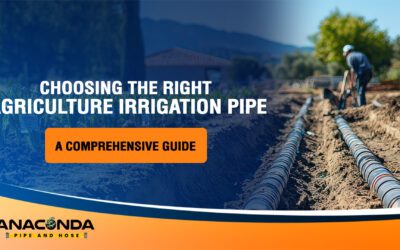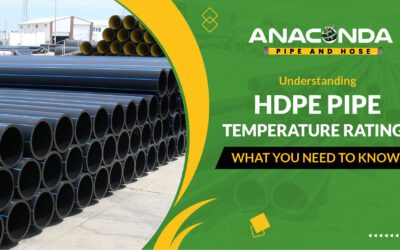During oil and gas drilling, specialized drilling mud mixtures are continuously pumped downhole to lubricate the drill bit, maintain borehole stability, and ferry rock cuttings back to the surface. This drilling mud circulation fueling underground operations relies on an interconnected piping network.
Traditionally fabricated from steel or ductile iron, legacy drilling mud piping frequently develops leaks and flow restrictions that disrupt operations. By upgrading to advanced HDPE pipe engineered for abrasion resistance and leak protection, drillers can count on smooth, uninterrupted mudflow for the life of a well.
The Drilling Mud Challenge
Drilling mud pipe handles an abrasive mixture under pressure while contending with:
- Heavy, gritty solids eroding pipe walls and valves
- Corrosive fluids degrading seals and steel
- Vibrations loosen joints, causing leakage
- Excessive wear at elbows and valve connections
This punishing combination inevitably degrades outdated piping materials. The effects compound over time as expanding cracks allow in sand and grit, accelerating abrasion damage. Loosening joints also increase leakage. This disrupts mudflow, costing hours of lost circulation and requiring emergency repairs.
HDPE Pipe – Truly Optimized for Drilling Mud
After decades of materials innovation, drillers are now protecting their mud circulation systems by choosing high-density polyethylene (HDPE) drilling mud pipes featuring:
- Fusion-welded, leak-proof joints
- Ultra-smooth flow bores prevent clogging
- Resistance to abrasive fluids and solids
- Broad chemical resistance
- Ability to absorb vibration and noise
Combined, these enhancements make HDPE pipe ideal for maximizing drilling mud flow because it’s:
Completely Leak-Proof
HDPE’s fused joints don’t loosen or leak under heavy vibrations, protecting consistent mud flow.
Clog and Erosion Resistant
Non-stick, smooth walls maintain open bores, preventing gritty solids from adhering and restricting flow.
Withstands Internal Abrasion
Mud additives and chemicals won’t roughen up or degrade HDPE pipe walls, which retain smooth flow.
Broad Chemical Compatibility
From brines to oil-based muds, HDPE stands up to corrosive fluids that rapidly degrade steel or ductile iron pipes.
Simplified Installation
Available in long custom sections, HDPE fusion welding reduces leak-prone field joints by 90% or more.
Noise and Vibration Absorption
HDPE piping dampens noise and vibration from pumps and valves – reducing component wear.
Future-Proof Reliability
With 5x the lifespan of other options, HDPE remains impervious to the harsh effects of drilling muds for over 50 years.
Operational Consistency
The leak- and clog-proof design provides reliable, consistent mud flow to the drill bit, enabling faster, lower-cost well completion.
Reduced Maintenance
HDPE’s resistance to all drilling mud damage mechanisms virtually eliminates maintenance requirements.
Improved Safety
Minimized leakage lowers slip and fall risks around drilling equipment and infrastructure.
Controlling What’s Below From Above
Smooth-running mud circulation provides the foundation for controlling vital subsurface operations. Modern drillers are securing this foundation and preventing profit-draining leaks by installing resilient, fused HDPE mud flow piping immune to drilling conditions that unravel inferior materials.
With drill sites scaling up and wells reaching farther than ever, drillers can complete critical projects faster and more efficiently by optimizing mudflow and protection with HDPE pipe upgrades. This advanced system shields against downtime from leaks and clogs in the long run.
The Transition to HDPE Drilling Mud Pipe Has Begun
The transition to HDPE drilling mud pipe systems represents a significant achievement by revolutionizing the oil and gas drilling approach, wherein drilling muds can be reliably circulated in the existing piping system. Traditionally, pipelines made of steel or ductile iron were prone to failure because of the harshness of the abrasive solids, corrosive liquids, and the intense vibrations resulting in frequent leaks, blockages, and operational disruptions. However, they opt for high-density polyethylene (HDPE) pipes for high abrasion resistance, leak protection, and durability. In that case, drillers can guarantee that the mudflow will be smooth and continuous for the whole period a well is operational. HDPE piping equipped with features such as fusion-welded, ultra-smooth flow bores, and broad chemical resistance enables a robust solution that provides maximum efficiency in mudflow, minimum maintenance, and the highest safety standards, resulting in faster completion of critical drilling projects with most minor leak and downtime losses.
Adapting resilient HDPE pipeline systems that cannot withstand the drilling operations’ unfriendly conditions has helped modern drillers establish a platform for successful subsurface management. The HDPE drilling mud pipes are scalable and durable, so drill sites can maintain drainage consistency, save on costs, and attain the required safety regulations. The transition towards HDPE technology is improving mudflow and protection and acting as a benchmark for designing drilling works to be future-ready against the issues of inferior materials. As drill sites expand and wells reach more profound records, HDPE pipe upgrades maintain the efficiency, profits, and safety required in oil & gas discovery and production activities.





0 Comments